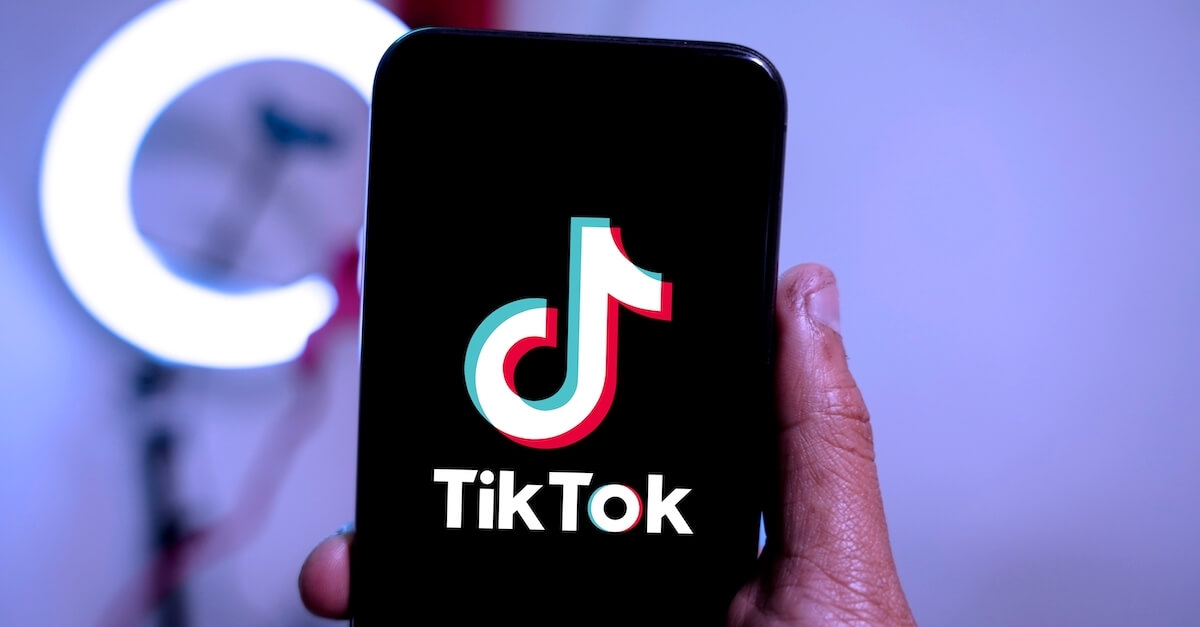September 28, 2023
What Creators and Brands Need to Know About Generative AI for TikTok
By Liza Colburn

TikTok has taken the social media universe by storm with short-form viral videos of dances, humorous skits, heartfelt messages, fashion, travel, and more. As of 2023, TikTok has over a billion monthly active users globally, including 150 million in the US. The viral nature of the platform, its unique algorithm, and its power to keep users engaged watching videos back-to-back have all contributed to the exponential growth of TikTok and its creators. With the advent of Generative AI, there is even more opportunity for creators and brands to expand their presence on the platform. Queue up the dance music as we dive into Generative AI for TikTok.
What is Generative AI for TikTok?
Generative AI refers to artificial intelligence or AI used to create text, images, audio, or video. It can also produce code or synthetic data. For brands and/or creators on TikTok, text, image, audio, and video creation are the primary use cases for Generative AI on the platform.
Why is AI-generated content growing on TikTok?
It’s recommended that users post 1-4 times per day on TikTok for optimal distribution on the platform. That’s an absolute minimum of 365 videos a year. At three videos a day, a brand or creator would need to produce > 1,000 videos a year.
So brands and creators alike need to churn out videos fast, frequently, and consistently in order to further build their brand, connect with audiences, or get discovered. Just because TikTok videos are short, however, doesn’t mean that they are fast to produce. A lot of time, editing, and production value often goes into them.
While it isn’t best practice to rely on Generative AI to create a TikTok video entirely, this technology helps brands and creators edit and produce videos faster and more efficiently. It allows brands and creators to create new content without the expenses of studio time, traditional video editing, etc. That makes it more affordable to create social media content at scale.
5 TikTok AI best practices
Generative AI is becoming a key technology in the toolkit for TikTok and its users. How can brands and creators use it responsibly, effectively, and efficiently? Here are a few considerations and best practices to take into account.
1. Disclose all AI-generated content on TikTok
TikTok requires creators to disclose any AI-generated content. If AI content isn’t properly labeled, the platform could take it down. TikTok recently made it easier to disclose when content has been AI-generated with a toggle labeled “AI-generated content” that users can find under “more options” when uploading a video.
As AI content tools like DALL-E and Midjourney become more mainstream, Meta is also said to be working on disclosures for content that has been created or edited by AI. YouTube is currently testing an internal AI feature that summarizes videos. TikTok is launching a new Generative AI avatar creator tool. In the near future, most social media platforms, including TikTok, are likely to launch their own Generative AI tools to aid in content creation and require all accounts to disclose when content has been generated and/or edited by AI. In the future, watermarks could also be required on AI-generated content.
2. Don’t misrepresent anything or anyone
Deepfake videos that cause harm by misleading users about people or events have been banned on the platform since 2020. Therefore the “AI-generated” tags are meant to label content that depicts “realistic scenes.” While it’s not totally clear what TikTok means by that, they are likely trying to get ahead of an increase in deepfakes as AI-generated content becomes commonplace. To be safe, TikTok users should properly tag any content that AI has helped produce no matter how minimal the use of AI was.
Whether social media content is AI-generated, a deepfake, or something else, it should never be used to harm anyone or misrepresent anything. Even if it’s meant to be humorous or satirical. TikTok posts have the potential to go viral, even if the account posting it doesn’t have a ton of followers. Harmful content has the potential to do an insurmountable amount of harm. When in doubt, don’t post it.
Brands and creators should only use avatars with caution. While there are ways to responsibly use avatars, there are some key issues that can arise while using them. On one hand, they look synthetic rather than human, so people can be turned off by them. On the other hand, avatars are becoming more and more realistic. Audiences can be deceived into thinking they are actual people when they aren’t.
3. Always take a human-first approach
TikTok exploded in popularity due to the authenticity and overall humanness of its content. Other social media platforms and creators have followed suit. Many content creators have gone away from the airbrushed Instagram aesthetic in exchange for the more authentic content TikTok is known for. Generative AI should be used to make more content more human. It shouldn’t take away from the human-first content that made the platform popular in the first place.
Consider using Generative AI in smaller, but impactful ways. For example, use Generative AI to create a custom video backdrop. Then film the video/audio and write the script without the help of Generative AI. Generative AI can then later be used to edit the video. Or do the reverse by using Generative AI to create a video script and/or audio. Then film the video or create a backdrop without the help of Generative AI. Using Generative AI for different aspects of content development rather than for full content creation keeps TikTok videos authentic and human while still benefiting from efficiency or effectiveness gains.
4. Respect copyrights
When it comes to who owns the rights to AI-generated content, it’s still very much the Wild West. While courts recently ruled that AI-generated art created without human input cannot be copyrighted, there are likely many other cases and rulings to come as the law catches up with technology. To be safe, brands and creators should use Generative AI to optimize original content. Applying Generative AI to content the creators don’t have the right to, doesn’t make it new content. It’s the creator’s responsibility to obtain the rights, licenses, permissions, clearances, and/or approvals necessary for the content posted.
This is often overlooked when creators co-create content or brands repost user-generated content from customers. Always ask permission before posting any content originally created by someone else or featuring someone else.
5. Survey AI tools closely
AI-generated content can only be as good as the Generative AI solutions that brands and creators use. AI solutions should use data that is relevant, accurate, and unbiased. Data must be continually reviewed and refined so the AI models can stay current. Users should also consider ethical implications such as data privacy and transparency before using any AI.
4 top use cases of TikTok AI
A lot goes into the short-form videos TikTok is known for. There are key ways GenAI is a game changer when it comes to the editing and creative process needed to create videos at scale.
1. Video editing and creation
There are already a wide variety of AI video generators out there. More hit the market each day. They allow users to create videos from an article, script, other text, images, music, video, and more. Creators can instantly generate audio from text in a variety of voices and even languages. It’s simple to customize text, fonts, colors, images, and even add captions and translations using AI video generators. When users can easily turn original text or music into a well-produced video, they are able to get their message across faster and in more impactful ways than before. In the near future, it is possible that all of these Generative AI capabilities will also be available natively within TikTok.
2. Scripts and captions
While video can easily be generated through text, Generative AI can also be used to create text for video scripts and captions. Some, but not all, tools used to create AI-generated text can generate conversational and on brand copy at scale.
Persado takes AI-generated copy a step further. Enterprise marketing teams use Persado Motivation AI, a specialized, enterprise class of Generative AI that easily creates digital marketing messaging proven to drive business results. With Persado, marketers can generate high-performing, personalized digital marketing messaging across channels and industries.
For marketing teams looking to boost conversions, Persado Essential Motivation allows brands to leverage over a decade of machine learning insights into what works for Fortune 500 brands to create top-performing messaging. On TikTok and other social media platforms, Persado increases digital marketing ROI for enterprise brands by creating language that is both efficient and effective. For more on this, discover the 5 Generative AI Capabilities Businesses Need for Optimum Impact.
3. Creating effects
Generative AI has given creators and brands the ability to expand what they can create in Effect House. Users can seamlessly add effects to AI-generated assets from third party tools or TikTok’s many in-app AI effects such as AI Greenscreen and AI Art.
4. Brainstorming
AI content tools often help solve the “blank page issue.” When deciding what new content to create, brands and creators can use Generative AI to brainstorm. The ability to quickly bounce off ideas and explore different content concepts, messaging, etc. helps in the creative process even if the AI-generated content isn’t ultimately used.
Why Generative AI adoption is inevitable
Brands and creators on TikTok should not shy away from using Generative AI to brainstorm or to get more content done in less time. While it may seem overwhelming at first to change the content creation process and to navigate countless new tools and regulations, waiting to adopt AI simply isn’t the path forward. Instead, start small by using Generative AI to brainstorm and create different concepts. Then move on to incorporating it more in the editing and creative process.
As more and more social media users adopt Generative AI on TikTok and other platforms, brands and creators not using Generative AI likely won’t be able to keep up with the volume and quality of content of users using GenAI. TikTok and other major social media platforms are also already incorporating Generative AI capabilities into the platform to aid in content creation. So brands and creators will have access to even more GenAI capabilities within TikTok and outside of the platform. Knowledge of GenAI is a skill creators will need to have as they grow on TikTok and other platforms in the future.
For those on a mission to make it onto the coveted ‘For You’ page, start collaborating with Generative AI.


